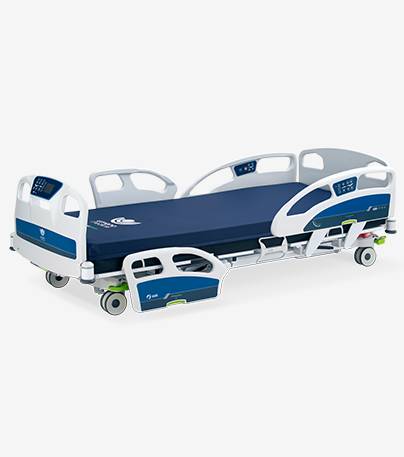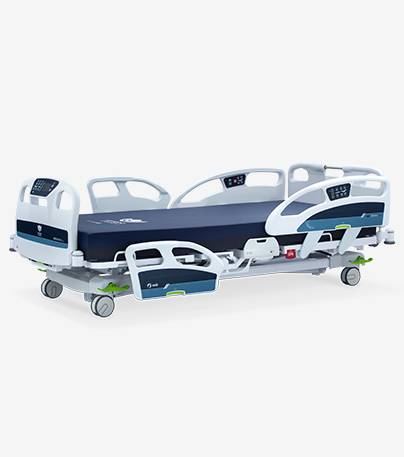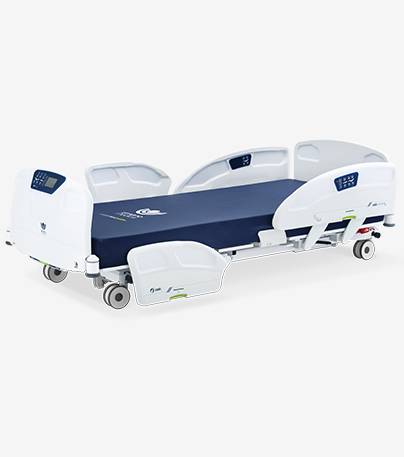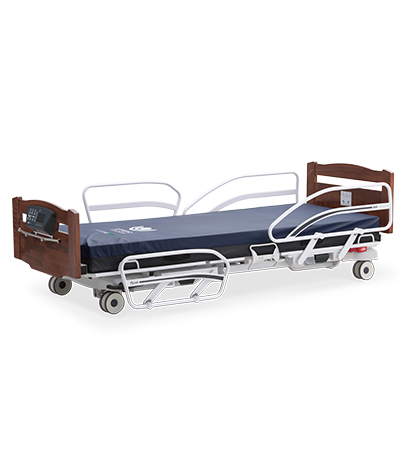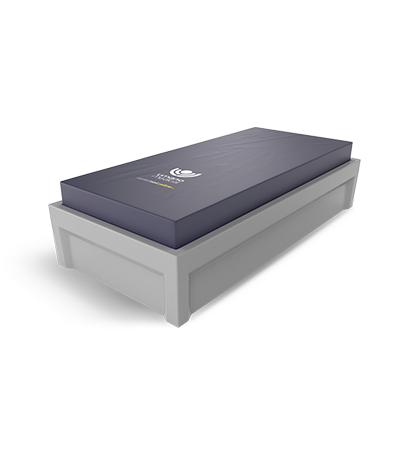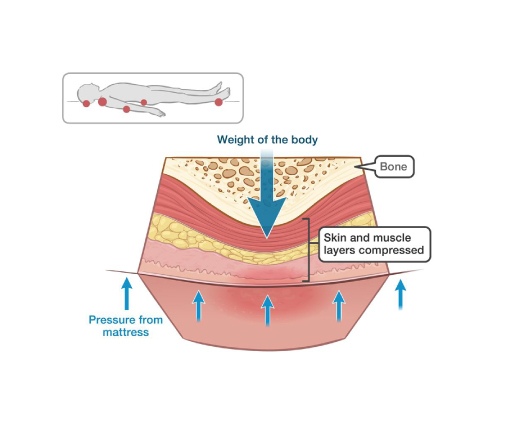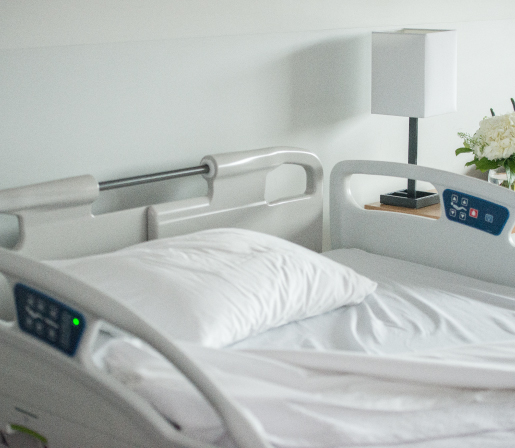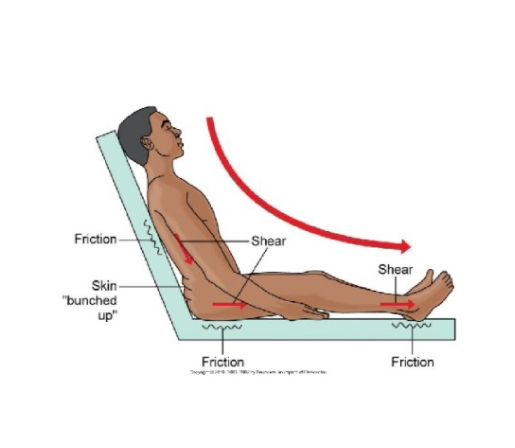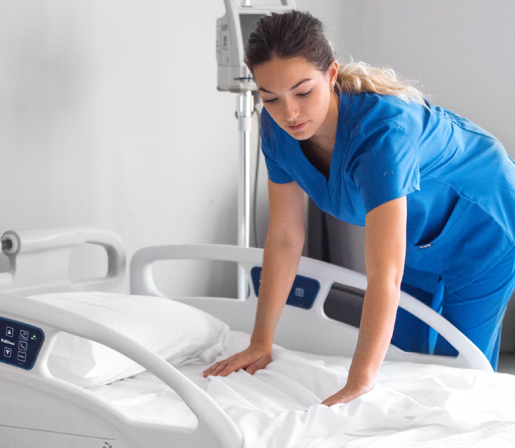
Seven Factors to Consider When Choosing a Support Surface for Patients

We know that you and your healthcare team want to ensure that every patient who enters your facility receives a high level of comfort and clinical care during their stay. However, with limited time and the multitude of support surface types available, selecting the support surfaces appropriate for each unique situation can be challenging. While this complex process is not limited to the aspects we list in this article, we hope the following seven factors can serve as a starting point for selecting a support surface for your patients.
1. Patient’s Level for Risk of Developing Pressure Injuries
A patient’s level of risk of developing pressure injuries is one of the first factors to keep in mind when selecting a support surface. The specific level of risk of a patient developing a pressure injury (PI) may be assessed using a standardized, evidence-based assessment tool such as the Braden Scale. This scale evaluates six different factors: sensory perception, moisture, activity, mobility, nutrition as well as friction and shear.
A higher Braden score is associated with a lower risk of developing pressure injuries (PI). For a patient who is less at risk of developing this type of injury, you may want to consider using a preventive surface. On the other hand, for patients who present with a higher risk of developing pressure injuries, a therapeutic surface might be more appropriate.
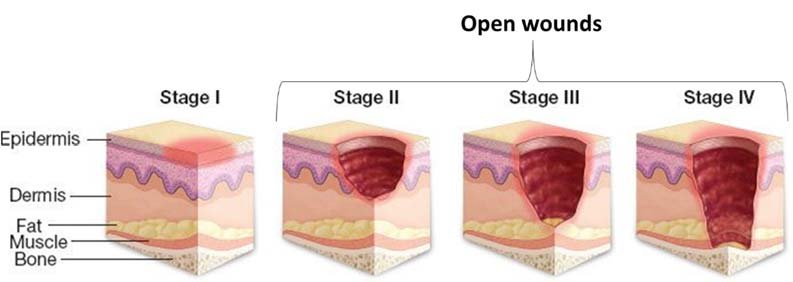
2. Condition and Location of Existing Pressure Injuries
If a patient already suffers from pressure injuries, the location of those wounds may influence the choice of a therapeutic support surface. For example, if the pressure injuries are located on the patient’s heels, you might look for a surface designed to reduce pressure on that part of the body. Appropriate surfaces may present features such as a lower Indention Force Deflection (IFD) rating in the heel area, which will provide a softer foam to immerse and envelop the heels, hence reducing the pressure on that area.
3. Microclimate Management Needs
Microclimate management needs is another factor to consider when deciding on a support surface. Low air loss (LAL) therapy may play a role in assisting patients with incontinence, excessive sweating or wound drainage by helping to keep a patient’s skin cooler and dryer.
Low air loss therapy (LAL) is administered directly underneath the patient through the vapor-permeable top cover of the support surface. A support surface that offers low air loss therapy may therefore contribute to the prevention of pressure injury by managing heat buildup and humidity.
4. Mobility, Physical Activity, and Positioning Limitations
A patient’s mobility level, their physical activity capability, and their ability or inability to reposition themselves are also important factors to consider when choosing a support surface. Depending on their condition, some patients may be unable to change their position themselves. In these cases, a support surface with continuous lateral rotation therapy (CLRT) might help reduce skin damage.
In addition, this therapy is often chosen for patients at risk of developing pulmonary complications due to immobility. Studies have demonstrated that when introduced early in these patients’ treatment, the use of continuous lateral rotation therapy could potentially reduce critical care length of stay (LOS) and ultimately reduce treatment costs.
5. Fall and Entrapment Risk
The risk of falls and entrapment is yet another factor to consider when selecting a support surface. Patients who retain some or all of their mobility, or those who are able to get out of bed on their own, might be at risk of falling or getting trapped between the edge of the surface and the siderails of the bed.
To address this, some support surfaces offer firm foam borders while others have air borders set at a high level of pressure to keep them very firm. A support surface with lateral borders could potentially increase safety during bed egresses, ingresses, and sit-to-stand transfers. Similarly, firm side edges can reduce the risk of patient entrapment.
6. Patient Weight
Another factor to evaluate when deciding on a support surface is to ensure that the weight capacity of the equipment matches the patient’s needs. Support surfaces usually have two types of weight capacity: the safe working load and the therapeutic weight capacity.
The safe working load corresponds to the maximum weight a support surface can support. Therapeutic weight capacity, on the other hand, refers to the support surface maximum weight capacity to sustain therapeutic function in an optimal manner. Note that those two values sometimes differ. For instance, a particular support surface might indicate a safe working load of 500 lb but a therapeutic weight capacity of 350 lb for continuous lateral rotation therapy (CLRT).
Depending on a patient’s weight and body characteristics, you might want to consider a surface with a higher therapeutic weight capacity or a bariatric surface.
7. Previous Support Surface Usage
The type of support surface previously used may be another factor to consider when selecting support surfaces. Members of your care team are likely to have preferences regarding specific surfaces or therapies that they consider more appropriate for their patients. Thus, when selecting the type of support surfaces to provide at your facility, it may be helpful to involve members of your care team. This may include the clinical team, cleaning staff, maintenance team, and your facility administrators.
Patients may also have preferences based on previous experiences. For example, if a patient had a good outcome with a particular model during their last visit, they may prefer that model to be used during a subsequent hospitalization. A patient who uses such technology at home could potentially have preferences in this regard as well.
Choosing a Support Surface: A Multi-Factorial Decision
As we stated at the beginning of this article, while this seven-factor assessment is fairly comprehensive, it is not exhaustive. Choosing support surfaces remains difficult, as this is a multi-factorial decision. However, a careful analysis of the available technology and the needs of your facility, patients, and care teams can help you provide high-quality continuous care while simplifying the decision-making of your care team.
Moreover, manufacturers of support surfaces are continually working to improve and develop support surface technologies to help prevent and treat pressure injuries and other complications associated with patient immobility. As such, you may want to further explore your options in choosing the right support surfaces for your care team and patients. Our support surface specialists are dedicated to helping you identify your facility’s specific needs. We work every day to make sure that our line of support surfaces meets your requirements and ensures your satisfaction.
About the author

Jasmine Joly-Dumont
More articles form Jasmine Joly-Dumont

Headquarters
230 Nilus-Leclerc Blvd.
L'Islet, QC G0R 2C0
CANADA
1 844 409-4030
Lévis Office
470 3e Avenue
Lévis, QC G6W 5M6
CANADA
US Location
11845 Adie Rd.
Maryland Heights, MO 63043
UNITED STATES
Sherbrooke Office
670, Joseph-Louis-Mathieu Rd.
Sherbrooke, J1R 0X3
CANADA
Careers
Our talented and passionate team is determined to revolutionize the medical industry. Be part of the journey: join the Umano Experience.
See available jobsConnect with us
Copyright © 2025 Umano Medical inc

